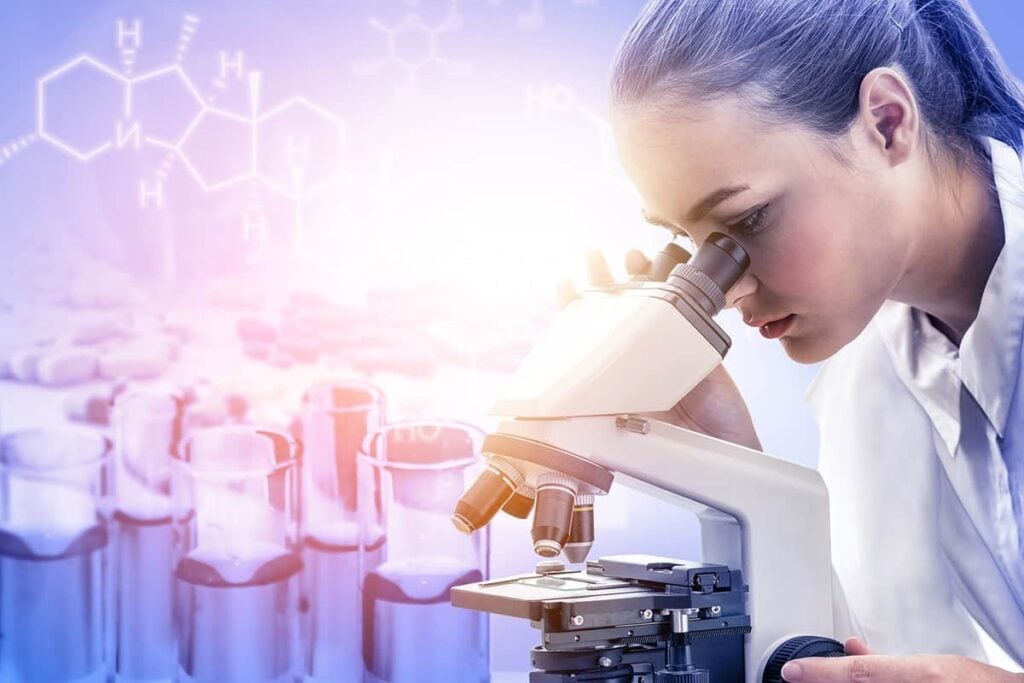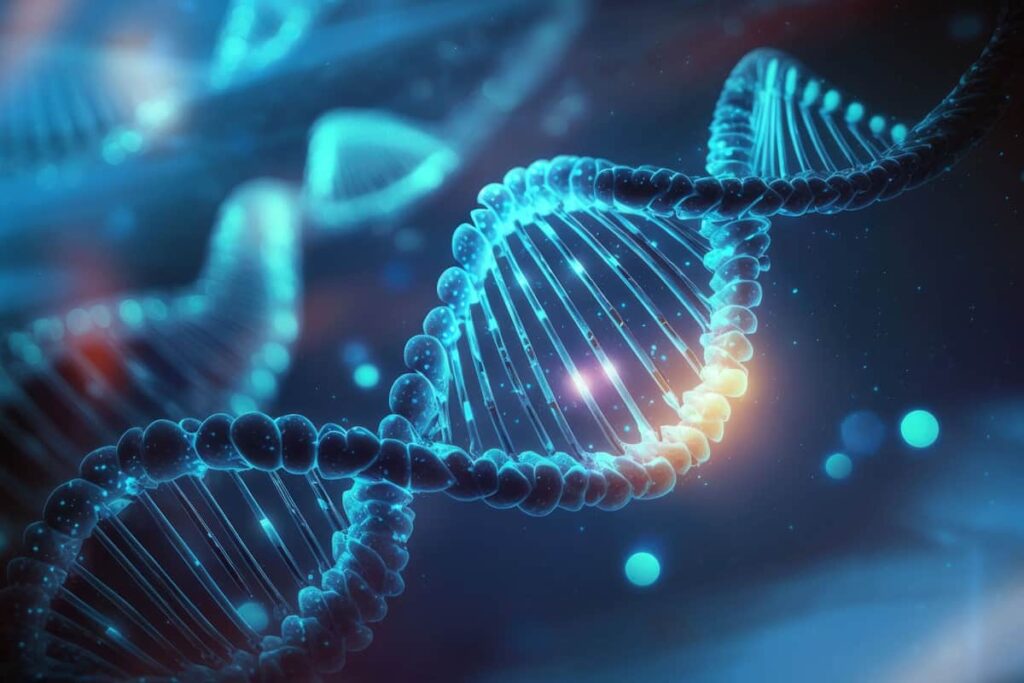Company Uses AI Drug Discovery for Designing Biologics
Table of contents

The bright minds at Insilico Medicine announced just today a major breakthrough in the rapidly growing field of AI drug discovery. The Hong Kong startup used a type of AI system called deep learning to simultaneously identify both a small-molecule drug and its ideal biological target to treat pulmonary fibrosis. It took just 18 months and about $2.5 million to do all of the work and validate the achievement as the “first-ever use of AI for R&D leading up to preclinical studies.”
There’s far more to the individual story, but the bigger picture is that AI for drug discovery is making good on its promise to cut years and millions of dollars in the development of new therapeutics. So it’s no surprise that a young Silicon Valley startup recently got a lot of buzz for a $19 million Series A to build out its AI drug discovery platform for a category of therapeutics known as biologics.
Biotech is Big Right Now
Founded in 2019, BigHat Biosciences has raised a total of $24.3 million from a handful of San Francisco area venture capital firms. Leading the latest round is one of the most well-known VC firms today investing in disruptive technology – Andreessen Horowitz. Like many VC firms, Andreessen Horowitz is bullish on biotech, especially synthetic biology, which engineers nature’s own biological processes into novel machines. Last year, funding to synbio companies reached a record $7.8 billion, according to SynBioBeta, a networking and news organization for the industry. That’s more than twice the amount raised in 2019. Biotech IPOs also soared in 2020 to an all-time high of $14 billion, SynBioBeta reported.

This month’s BigHat deal means that one of Andreessen Horowitz’s general partners, Dr. Vineeta Agarwala, will get a seat on the company’s board of directors. We’re actually going to lean a bit on her excellent blog post about BigHat’s AI drug discovery platform and value proposition to talk a bit more about the technology itself. After all, she earned MD and PhD degrees from Harvard Medical School and MIT, and completed her residency at Stanford. We’re MBAs who like investing in cool technology and smoking weed.
Small-Molecule Drugs Versus Biologics
One of the first things you need to understand is that BigHat is working on a different class of therapeutics than other leading AI drug discovery companies like Atomwise or Insilico, as far as we understand it. Pharmaceuticals used to be dominated by small-molecule drugs, which are generally simple chemical compounds that can be synthetically manufactured. Aspirin is the quintessential small-molecule drug thanks to its stability and bioavailability, among other characteristics.
Biologics, on the other hand, include therapies like monoclonal antibodies and hormones. As the name suggests, they are sourced straight from Mother Nature. Many rely on proteins, the workhorse molecules that carry out a wide variety of biological functions, from growing fingernails to keeping your liver functioning despite your best Friday night efforts.
Proteins are made of hundreds of smaller units called amino acids. Our genetic code runs in the background, telling our cells exactly which amino acid goes where to build each protein for its special purpose in your life. That means protein-based therapeutics like monoclonal antibodies – lab-designed antibodies that help the immune systems fight foreign substances – can be programmed to do a specific job. We’ve written previous articles about companies designing novel proteins and turning them into molecular machines for medicine.
AI Drug Discovery in Biologics
There are some drawbacks. These drugs are sometimes not as stable or require refrigeration. The body might reject it like any other infection by a foreign invader. Engineering these protein-based drugs is sometimes the difference (paraphrasing someone smarter than us) between designing a bicycle (aspirin) and a Tesla. It’s obviously a lot more expensive – up to 100 times more, according to one estimate – and time-consuming. The current methodology, a decades-old approach that relies on experimental screens of large sequence libraries, can only get at a small fraction of all possible amino acid sequences.
This is where machine learning can be so powerful, because it shifts from bulk screening to data-driven, iterative engineering, according to Dr. Agarwala. As she further explains:
Machine learning models can integrate data from many experiments over time, and optimize over the multi-parameter search space of protein sequences far more completely than any individual screen ever can. The effects of infusing engineering into every step of the process are exciting. This means BigHat can design smarter, more informative experiments – telling us where we need to go, instead of asking us to explore the space blindly.
Dr. Vineeta Agarwala, general partner at Andreessen Horowitz
The company’s automated, high-throughput wet lab combines machine learning and synbio technologies to speed up the design and discovery process. To paraphrase Mr. Spock from “Wrath of Khan” (because that’s the kind of geeks we are): What took weeks or months can be done in just days. The platform automatically optimizes antibodies across a range of parameters, such as stability, solubility, and even the function of a protein in a cellular pathway or biological process. Everything in this lab, Dr. Agarwala says, from common lab tasks such as cloning to quality control, is optimized with computational insights.

One can see some similarities with what BigHat is doing in AI drug discovery for proteins compared to companies like Ginkgo Bioworks, which is developing biological machines out of microbes at industrial scale. Both are automated factories for synthetic biology. One of BigHat’s earliest validation experiments involved engineering an antibody in the lab that neutralized SARS-CoV-2, the virus that causes COVID-19. Currently, there are few therapies to treat the disease directly.
Conclusion
About 10 years ago, eight of the top-20 selling drugs in the United States were biologics. More recently, the number is more like seven of the top 10, according to BigHat, which also claims there are more than 200 biotherapeutics in use for diseases ranging from cancer to autoimmune disorders – generating more than $100 billion in annual revenue for drug companies. So there’s your total addressable market in a nutshell.

But that’s not the entire picture. The other part of the calculation in determining the value of the company’s technology is how much can it reduce drug development costs overall. The most recent study (above) found that biopharmaceutical companies spend an average of $1.3 billion on drug development. However, if you don’t calculate all of the money wasted on failed drugs, then the cost averaged only $374 million. If companies like BigHat can optimize drug discovery – meaning significantly cut failure rates out of the gate – that’s billions of dollars in savings that could mean lower costs to the healthcare system and consumers. Or the companies could just pocket all of the extra profits. Either way, BigHat and other AI drug discovery companies represent a revolutionary cost benefit if the technology works as promised.
Sign up to our newsletter to get more of our great research delivered straight to your inbox!
Nanalyze Weekly includes useful insights written by our team of underpaid MBAs, research on new disruptive technology stocks flying under the radar, and summaries of our recent research. Always 100% free.
















I aready wrote some time before you can invest in Insilico Medicine by buying UK stock FastForward Innovations : FFWD.L
With a market cap under 30 million we’d pass on that. Also, just because a fund invests in a private company doesn’t mean you’re getting the exposure you think. Similar to when you pointed out how to invest in SpaceX and we did a piece on what the exposure looks like:
https://nanalyze.com/2021/02/investing-spacex-baillie-gifford/
A more direct way of investing in Insilico Medicine will be by buying Juvenescence stock. They are planning IPO soon (but no specific date confirmed). They planned it for 2020 but it was delayed because of pandemic.
When they get listed you definitely will want to have it in your portfolio. Maybe you would like to produce article on Juvenescence ? I think Juvenescence fits well the type of companies you cover.
The Juvenescence IPO will be the biggest development in public market longevity investing since Unity Biotechnology went public in 2018. And because Juvenescence is a diversified portfolio of longevity companies it best represents the entire industry going forward. In the absence of a longevity biotech ETF this will likely be the best single longevity stock for regular people looking for exposure to the sector. (*Not investing advice!)
Juvenescence has raised $162 million in venture funding, which includes their most recent $100 million Series B. The company has a post-money valuation of $500 million, according to Craft.co
Juvenescence’s diversified portfolio of 11 assets spans the gamut of senolytics, AI companies, regenerative medicine, and nutraceutical products.
We have written about Juvenescence before: https://nanalyze.com/2019/09/juvenescence-ai-longevity/
There is no “must-have” stock for any portfolio. It all depends on the investor. We will need to wait until there’s an S-1 to look at before we can assess the appeal here. If they go the SPAC route, highly likely there won’t be enough information to make a decision.
Companies that have loads of small investments in other companies – publicly traded VCs – haven’t fared well for investors in the past. Juvenescence is a pipeline of joint ventures and longevity-focused startups. We’ll take a look under the hood if/when they go public.